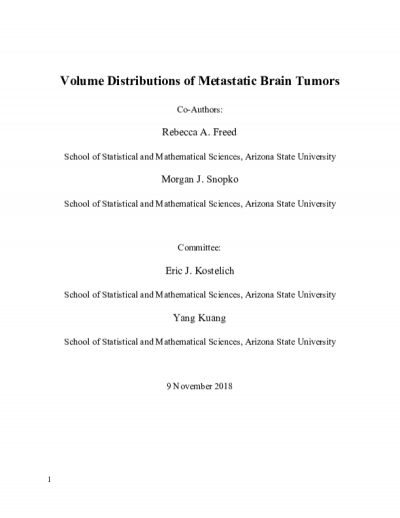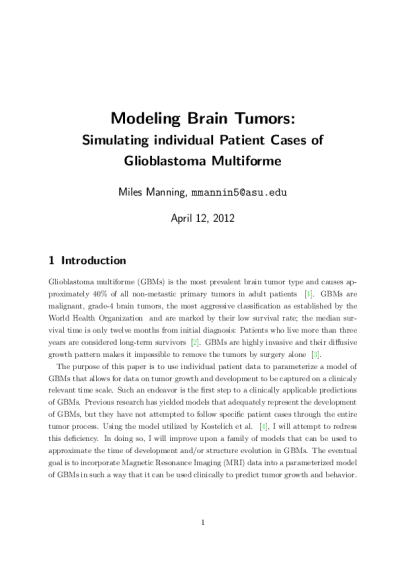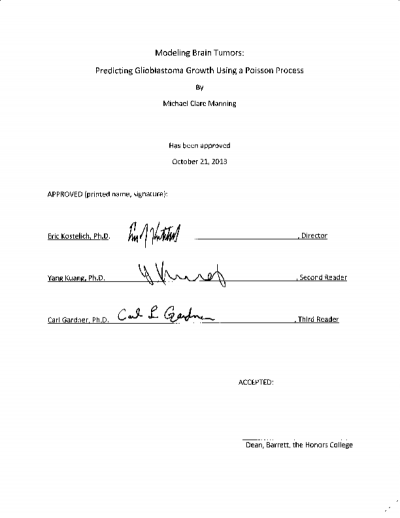Volume Distributions of Metastatic Brain Tumors

Description
Magnetic resonance imaging (MRI) data of metastatic brain cancer patients at the Barrow Neurological Institute sparked interest in the radiology department due to the possibility that tumor size distributions might mimic a power law or an exponential distribution. In order to consider the question regarding the growth trends of metastatic brain tumors, this thesis analyzes the volume measurements of the tumor sizes from the BNI data and attempts to explain such size distributions through mathematical models. More specifically, a basic stochastic cellular automaton model is used and has three-dimensional results that show similar size distributions of those of the BNI data. Results of the models are investigated using the likelihood ratio test suggesting that, when the tumor volumes are measured based on assuming tumor sphericity, the tumor size distributions significantly mimic the power law over an exponential distribution.
Date Created
The date the item was original created (prior to any relationship with the ASU Digital Repositories.)
2018-12
Agent
- Co-author: Freed, Rebecca
- Co-author: Snopko, Morgan
- Thesis director: Kostelich, Eric
- Committee member: Kuang, Yang
- Contributor (ctb): WPC Graduate Programs
- Contributor (ctb): School of Accountancy
- Contributor (ctb): School of Mathematical and Statistical Sciences
- Contributor (ctb): Barrett, The Honors College








